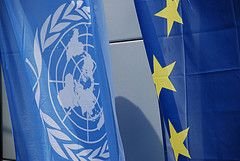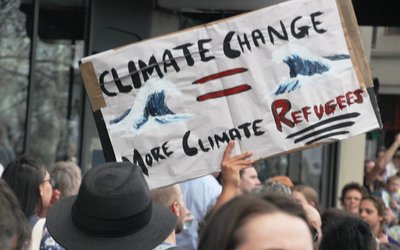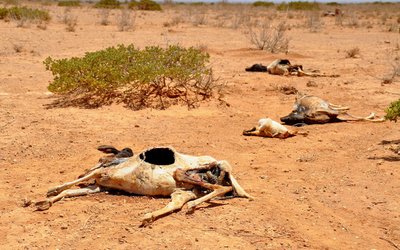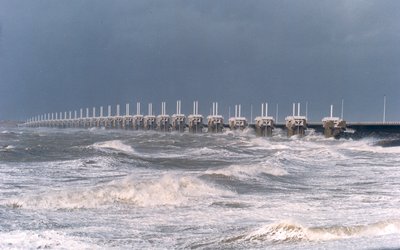
Future security risks have been related to climate change by several countries and international organizations. Among scientists the link between climate change and conflict and national security is still a controversial topic, however. On the other hand, disaster and conflict often go hand in hand; in 60 years of peacebuilding operations in 49 countries, in only one case (Kosovo) were there no natural disasters.
In 2009, the United Nations Secretary-General (UNSG) identified five ways in which climate change may be linked to international security:
- by increasing human vulnerability to things like water and food insecurity;
- obstructing and undermining economic development;
- increasing the risk of violent conflict;
- displacing large numbers of people or posing an existential threat to some states, such as those that could literally disappear under sea level rise;
- contributing to international tensions by overwhelming bilateral and multilateral forms of cooperation in areas such as shared water basins.
Opportunities for integrating climate change into peacebuilding have been investigated. The opportunities refer to socio-economic recovery, politics and governance, security and rule of law, and human rights. More attention needs to be given to these opportunities in order to build resilience and reduce the likelihood of more daunting and costly challenges in the future. To make this work, three obstacles have to be overcome:
- the lack of climate change tools and policies that can be easily introduced into typical peacebuilding programming;
- the skepticism and complacency of the donor community (climate change constitutes an additional cost and is unlikely to generate quick benefits);
- tensions between the objectives and timeframes of peacebuilding (the need to deliver immediate results) and those of climate change response (long-term thinking and planning).
Source: Matthew, 2014. Climatic Change 123: 83–93
Photo: EUNAVFOR (www.flickr.com)








